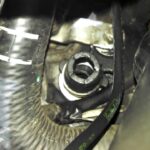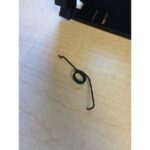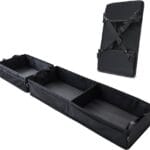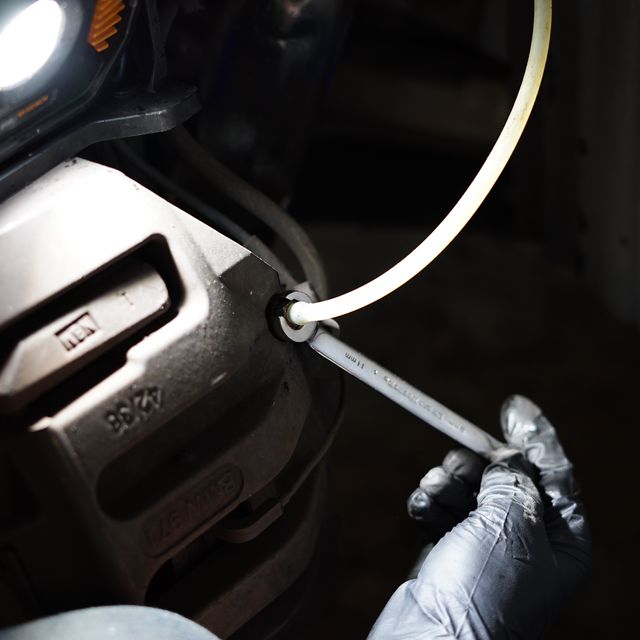How Far Can I Drive With A Broken Serpentine Belt
If you’ve ever heard a strange squealing noise under your vehicle’s hood, followed by a sudden loss of power steering or an overheating engine, it could be a sign that your serpentine belt has failed. The serpentine belt is a critical component in your vehicle, and when it breaks, the consequences can be immediate and severe.
In this article, we’ll explore how far can I drive with a broken serpentine belt, what happens when the belt fails, and why addressing the issue as soon as possible is important.
Key Takeaways
- It is not recommended to drive with a broken serpentine belt.
- You can drive for a short distance (a few minutes) without overheating, but you will lose power steering, air conditioning, and some other accessories.
- If you drive for too long with a broken serpentine belt, your engine will overheat and could be damaged.
- If you have a broken serpentine belt, you should have it repaired as soon as possible.
What Is the Serpentine Belt and Why Is It Important?

The serpentine belt, also known as the drive belt, is a long, winding belt that powers many of your car’s essential systems. It connects the engine’s crankshaft to various components, including:
- Power steering pump
- Alternator
- Air conditioning compressor
- Water pump
Without this belt functioning properly, your vehicle cannot run many of these systems. While the serpentine belt itself may seem like a small component, its failure can lead to significant damage or even leave you stranded.
What Happens When the Serpentine Belt Breaks?
When the serpentine belt breaks, several critical systems are affected immediately. The power steering, alternator, and air conditioning all rely on this belt, so you will start to notice symptoms right away. Here’s what you can expect when the belt fails:
- Loss of Power Steering: Power steering makes it easy to turn the steering wheel. Without it, steering becomes extremely difficult, especially at low speeds.
- Electrical Issues: The alternator, which generates electrical power to charge the battery and run electrical systems, stops functioning. While your car may continue to run for a short time using the battery, it will eventually die once the battery is depleted.
- Overheating: The water pump, which circulates coolant through the engine, is also powered by the serpentine belt. Without the water pump, the engine can quickly overheat, potentially causing irreversible damage.
- Battery Drain: As the alternator stops working, the battery will begin to drain rapidly. Lights may dim, and electronics may fail within minutes.
These issues make it dangerous to drive for any significant distance after the serpentine belt breaks.

How Far Can You Drive?
So, how far can you drive with a broken serpentine belt? The answer is not far at all.
- Battery Life: Your vehicle might continue to run for a few miles on battery power, but once the battery is depleted, the car will stall. Most modern vehicles rely heavily on electrical systems, so the battery will drain quickly without the alternator.
- Overheating: One of the most immediate concerns is engine overheating. Without the water pump functioning, the coolant won’t circulate, causing the engine temperature to rise rapidly. Depending on the outside temperature and engine load, you might only get a few minutes of driving before the engine overheats.
- Power Steering Loss: The loss of power steering makes your vehicle difficult to control, particularly when navigating sharp turns or parking. This can be a significant safety hazard, especially in traffic or at low speeds.
In most cases, you won’t be able to drive more than a few miles after the serpentine belt breaks before your vehicle is either too dangerous to drive or completely shuts down due to battery failure or engine overheating.
What To Do If Your Serpentine Belt Breaks
If your serpentine belt breaks while you’re driving, follow these steps to ensure your safety and prevent further damage to your vehicle:
- Pull Over Safely: As soon as you notice symptoms of a broken serpentine belt—such as difficulty steering or the engine temperature gauge rising—pull over to a safe spot as quickly as possible. Avoid driving any further, as continued use could result in serious engine damage.
- Turn Off the Engine: Once safely parked, turn off the engine to prevent overheating. Leaving the engine running could cause the temperature to rise quickly, leading to warped heads, cracked gaskets, or other costly repairs.
- Call for Assistance: If you’re unable to repair the serpentine belt yourself, call for roadside assistance or a tow. Driving without a functioning serpentine belt isn’t worth the risk, as you could cause significant damage to your vehicle.
- Inspect the Belt: If you’re mechanically inclined, you might be able to inspect the belt yourself. Check for signs of cracking, fraying, or wear. If the belt has snapped, you’ll need to replace it before driving further.
Can You Drive Without a Serpentine Belt?
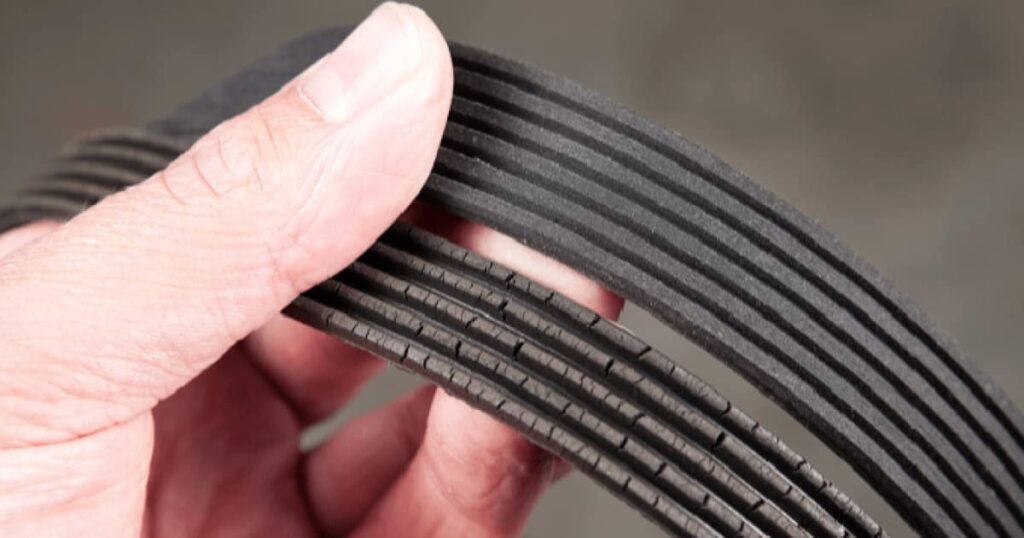
Technically, you can drive for a very short distance without a serpentine belt, but it’s highly discouraged. As mentioned, without the belt, the alternator will stop charging the battery, the water pump won’t cool the engine, and the power steering will fail. Driving without these systems can lead to catastrophic engine damage or dangerous driving conditions.
If you’re in a situation where the serpentine belt breaks while you’re far from help, it’s better to seek roadside assistance than to try to limp your vehicle to the nearest mechanic.
What Causes a Serpentine Belt to Break?
A broken serpentine belt can happen for a variety of reasons, and being aware of the potential causes can help you prevent this situation in the future. Common reasons for serpentine belt failure include:
- Age and Wear: Like any component in your vehicle, the serpentine belt wears out over time. As it ages, it becomes brittle and more prone to cracking or fraying.
- Misalignment: If the pulleys that guide the serpentine belt become misaligned, the belt can slip off or wear unevenly.
- Contamination: Fluids like oil or coolant leaking onto the serpentine belt can cause it to deteriorate faster, leading to premature failure.
- Tensioner Failure: The belt tensioner keeps the serpentine belt at the proper tension. If the tensioner fails, the belt may become too loose or too tight, increasing the risk of breakage.
Regular maintenance, including inspecting the belt for wear and ensuring the pulleys and tensioner are functioning properly, can help you avoid a broken serpentine belt.
How To Prevent Serpentine Belt Failure

Preventing a broken serpentine belt is much easier than dealing with the consequences of one. Here are a few tips to help you avoid this problem in the future:
- Regular Inspections: Inspect the serpentine belt for signs of wear, such as cracking, fraying, or glazing. A visual inspection every time you change your oil can help catch issues early.
- Replace at Recommended Intervals: Most manufacturers recommend replacing the serpentine belt every 60,000 to 100,000 miles, depending on the vehicle. Check your owner’s manual for the specific interval for your Ford F150 or other Ford models.
- Check Pulleys and Tensioner: Ensure that the pulleys are properly aligned and that the tensioner is functioning correctly. A failing tensioner or misaligned pulley can cause the belt to wear out prematurely.
- Watch for Leaks: Keep an eye on engine fluids. If you notice oil or coolant leaking onto the serpentine belt, get it repaired immediately to prevent damage to the belt and other components.
Conclusion
Driving with a broken serpentine belt is not only dangerous but can also cause extensive damage to your vehicle’s engine and other systems. While you might be able to drive for a short distance, it’s highly advised to stop as soon as possible and address the issue immediately.
For more expert advice on maintaining your Ford vehicle, Road Momentum offers valuable insights and practical tips to help you keep your car running smoothly. Whether it’s preventing a serpentine belt failure or handling other common car troubles, Road Momentum is your go-to resource for automotive care.
Remember, taking care of small maintenance issues now can save you from bigger, costlier repairs down the road.
FAQ:
How far can I drive my car with a broken serpentine belt?
It’s not safe to drive at all with a broken serpentine belt. Pull over and get your vehicle towed for repairs.
What happens if you drive with a broken serpentine belt?
Driving with a broken serpentine belt can lead to engine overheating, loss of power steering, and other serious issues.
Can you drive with a partially torn serpentine belt?
It’s not advisable to drive with a partially torn serpentine belt. It’s best to replace it to avoid further damage.
How much does it cost to fix a serpentine belt?
The cost to fix a serpentine belt can vary but typically ranges from $100 to $200, including parts and labor.



